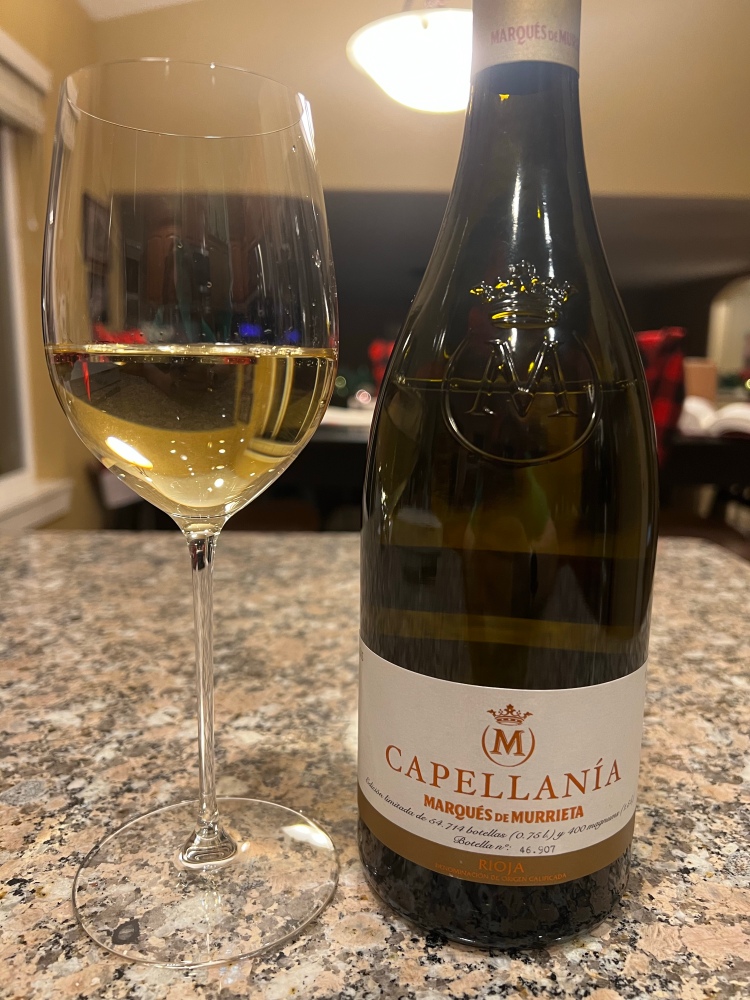
During my recent studies, my instructor spoke of Viura and how gracefully it ages. So, when I was perusing the shelves of my local wine shop, I was excited to spot a bottle from 2015. Viura, as it is known in the regions of Rioja and Rueda, also goes by the more common name of Macabeo, which is traditionally blended with Xarello and Parellada in the production of the Spanish sparkling wine, Cava. It is believed to be indigenous to Catalunya in Northeastern Spain, where Cava is produced. The first historical mentions of Macabeo are hypothesized to come from the 17th century. Macabeo is a grape that has potential to respond well to prolonged oak aging, like Chardonnay, if yields are controlled.
This week’s bottle is a 2015 Capellanía Viura from Marqués de Murrieta, a winery from Rioja Alta dating back to 1852. Alta is the northernmost subregion within Rioja and closest to the cooling influences of the Atlantic Ocean. This moderating factor allows the grapes to retain their acidity, which aids in providing aging potential. As white wines age, their color becomes progressively darker, transitioning from yellow to gold, amber and brown. When I poured my glass, I was surprised to observe a bright lemon wine with brassy accents. A bouquet consisting of butterscotch, toast, nutmeg, almonds, vanilla, butter and cream arose from the goblet. These characteristics were a result of the the winemaking methods, as well as the aging vessels used, in the wine’s production. While it’s not listed on the techinical sheet provided by the winery, this wine likely underwent a fermentation method called malolactic fermentation. This process converts malic acid (the acid found in green apples) to lactic acid (the acid found in milk). Lactic acid raises the pH, increases the body of the wine, and provides the aromas and flavors of cream and butter. This wine was aged in new oak, which provides the toast, nutmeg, and vanilla flavors. These can also be imparted during prolonged aging in a bottle. It was extremely reminiscent of the eggnog martini I enjoyed earlier in the week. This fuller bodied dry wine exhibited a moderate level of alcohol and acid, as well as a slightly perceptible level of oak tannin. The palate led with freshly ground nutmeg, french toast, and marzipan. These notes faded to a slightly salted butter and the aforementioned eggnog that slowly faded on the finish. It was lighter than those ‘oaky, buttery’ Chardonnays and full of holiday spirit. This wine would be wonderful if paired with a shrimp alfredo where the sauce has the traditional pinch of nutmeg!
-TheLooseTannin